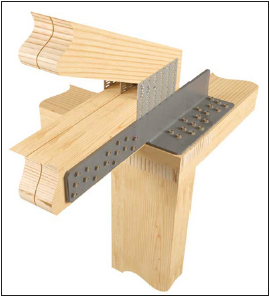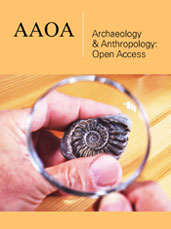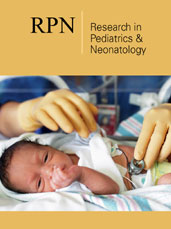Restrictive
Versus Liberal Fluid Bolus Therapy in Pediatric Septic Shock: Should It Be
Debated by Saptadi Yuliarto* in Research in Pediatrics & Neonatology_ The
Journal of Pediatrics
Abstract
To date, sepsis has contributed significantly to the child mortality rate,
which is around 8.9% in developed countries to 14.2% in developing countries
[1-3]. The most common cause of death (23.1-34.6%) was refractory shock [2-4],
of which most occured in the first 3 days [5]. An additional hour of persistent
shock was associated with >2-fold increased odds of mortality [6]. This
shows that early treatment of septic shock is one of the keys to reduce sepsis
mortality.
Fluid bolus is the main therapy for pediatric septic shock. International
consensus recommends fluid bolus therapy (FBT) 10-60mL/kg in the first hour,
accompanied by monitoring for hepatomegaly or increased work of breathing [7].
Resuscitation practice consistent with these guidelines can reduce mortality
[6,8,9]. Current international guideline was based on some outstanding pioneer
studies; unfortunately, all of them are retrospective observational and
single-center studies, with a small sample size. Thus, it needs to be
reevaluated whether the effectiveness of FBT in daily practice, certainly has a
causal relationship with patient survival, or it was just a representation of
lower severity illness in the survivor group.
FEAST (Fluid expansion as Supportive Therapy) trial, the first randomized
control trial (RCT) study, with many subjects (3141 subjects) and multicenter
in Africa, became the starting point for re-evaluation of FBT in recent years.
In subjects with severe infections accompanied by impaired consciousness,
respiration and perfusion, this study showed FBT of normal saline or 5% albumin
given 20-40mL/kg in 1 hour increased mortality compared to maintenance fluid
administration (RR=1.45, 95% CI, 1.13 -1.86; p=0.003) [10]. Although some
conditions were considered as research limitation (absent mechanical
ventilation, positive malaria and anemia [Hb<5g/dL] in most subjects),
inevitably these results sparked debate which underlies several studies or
clinical trial to compare the efficacy of restrictive and liberal FBT.
Before determining its effect on the outcome, it is necessary to take into
consideration what is the definition of “restrictive and liberal”? Is it based
on the volume of each bolus, the total volume of resuscitation, the total daily
volume, or the rate of delivery? This must be established in order to produce
same operational definition of the study. This definition is also important to
determine the factors that most influence the patient’s outcome.
A pilot study in UK compared bolus volumes of 10mL/kg (maximum 500mL per
bolus) and 20mL/kg (maximum 1000mL per bolus) in 15 minutes. The maximum volume
in 4 hours was 120mL/kg. As a result, the total volume of resuscitation in the
restricted group was lower than conservative (14.5% vs 25.7mL/kg, p <0.001);
however, there were no differences in mortality, length of PICU and hospital
stay, and PICU free days in 30 days [11]. It has to be noticed that this study
conducted in the developed countries with adequate facilities and low disease
severity. Moreover, the total volume of conservative group resuscitation was
20.7mL/ kg in the first hour and 25.7mL/kg in 4 hours; much less than the FBT
volume in international guidelines. Consequently, the results could not simply
generalize in the daily practice.
Another study in the adult population with septic shock compared the
restrictive (≤60mL/ kg in 72 hours) and conservative groups (no volume limit).
Similar to studies in children, there were differences in total fluid volume in
72 hours between the restrictive and conservative groups (47.1mL/kg vs. 61.1mL/
kg, respectively; p=0.01); however there were no differences in mortality,
incidence of organ failure, ICU and hospital length of stay, or serious adverse
effects within 30 days [12]. The 72 hour fluid volume in this study was far
less than the international guidelines and several previous studies, including:
Rivers (168mL/kg) , [13] Process (108-130mL/kg), [14] Promise (98mL/kg), [15]
or arise (108-109mL/kg) [16]. The total volume in 72 hours consisted of
resuscitation and non-resuscitation (maintenance) fluids. This revealed that
organ perfusion may still be adequate with a small volume of resuscitation,
because patients still get additional maintenance fluid afterwards.
Designed to compare restrictive and liberal FBT, however those two studies
were unable to solve the problem because the FBT volumes given were less than
international guidelines and daily practices. In the pediatric studies, low
severity illnesses might be the reason why such patients responded to the small
volumes of FBT [11]. In adult studies, unblinded intervention methods and a
tendency to limit the FBT volume in daily practice cause both groups got
smaller volumes [12]. Therefore, it seems that so far there has not been an
adequate study to determine the effect of different FBT volumes on patient
outcomes.
High impact journals in Crimson Publishers?





